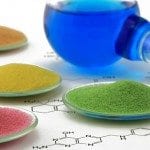To Schedule Appointments: 309-360-9035
Other Inquiries: 309-360-8077

 There are so many different kinds of acids used in chemical peels, chemical exfoliations and products – how do you know which ones are right for your skin? This article will explore many of the different acids used in chemical peels and products so you can make an informed choice when purchasing products or receiving a skin care treatment such as a chemical peel.
There are so many different kinds of acids used in chemical peels, chemical exfoliations and products – how do you know which ones are right for your skin? This article will explore many of the different acids used in chemical peels and products so you can make an informed choice when purchasing products or receiving a skin care treatment such as a chemical peel.
Alpha Hydroxy Acids (AHA) – many people are familiar with AHA’s. These are water-soluble acids that work to release the desmosomes (adhesions) that hold skin cells together. This causes exfoliation and increased cell turnover. Many of AHA’s typically used in skin care, including chemical peels, also help produce collagen and elastin to firm the skin.
Beta Hydroxy Acids (BHA) – Typically, the only BHA used in skin care is salicylic acid. Salicylic acid penetrates into oil-filled follicles and breaks down impactions. It normalizes the cell shedding in follicles that contributes to whiteheads, blackheads and pimples. It leaves the skin smooth, with no flaking or peeling.
Azelaic Acid – is an antioxidant and anti-inflammatory, protecting the skin and reducing redness. This is a good acid to use in chemical peels and products when treating acne, rosacea, melasma and post inflammatory hyperpigmentation because of it’s anti-inflammatory properties.
Retinoids – are a vitamin A derivative, with many proven benefits to the skin. They increase cell turnover, help lift pigmentation, reduce impacted acne and are very beneficial for most skin types. In increased percentages, they can increase post-treatment exfoliation, which make them a great add-on to any chemical peel or exfoliation.
When looking at skin care products, read the ingredient label and choose the ingredients that are right for your specific skin type. In chemical peels or exfoliations, a blend of the correct acids will address your specific skin conditions better than one acid alone.
At Infuse Skin and Body, our experienced and licensed professionals can guide you in the right products and treatments for your unique skin care needs.
Sorry, comments are closed for this post.